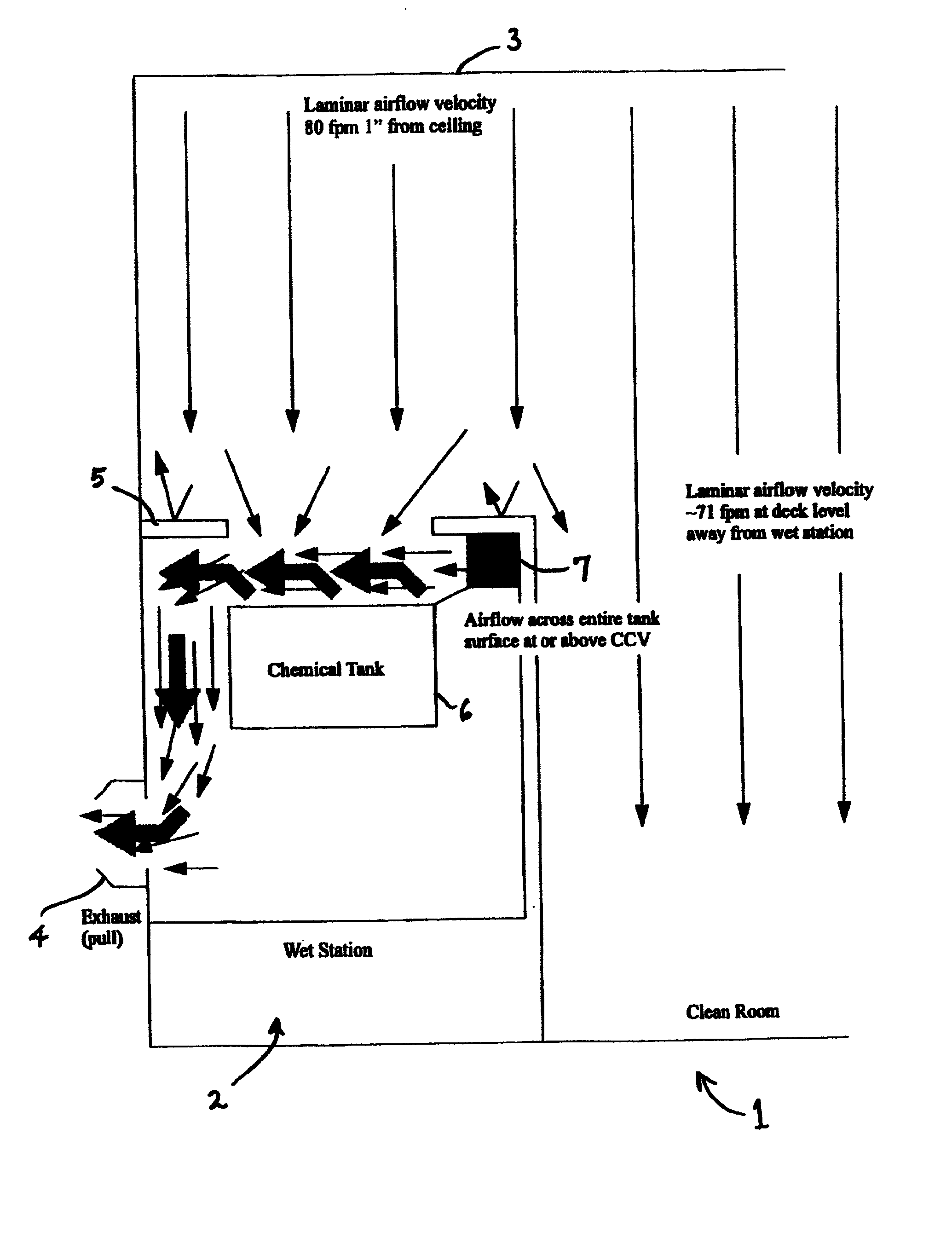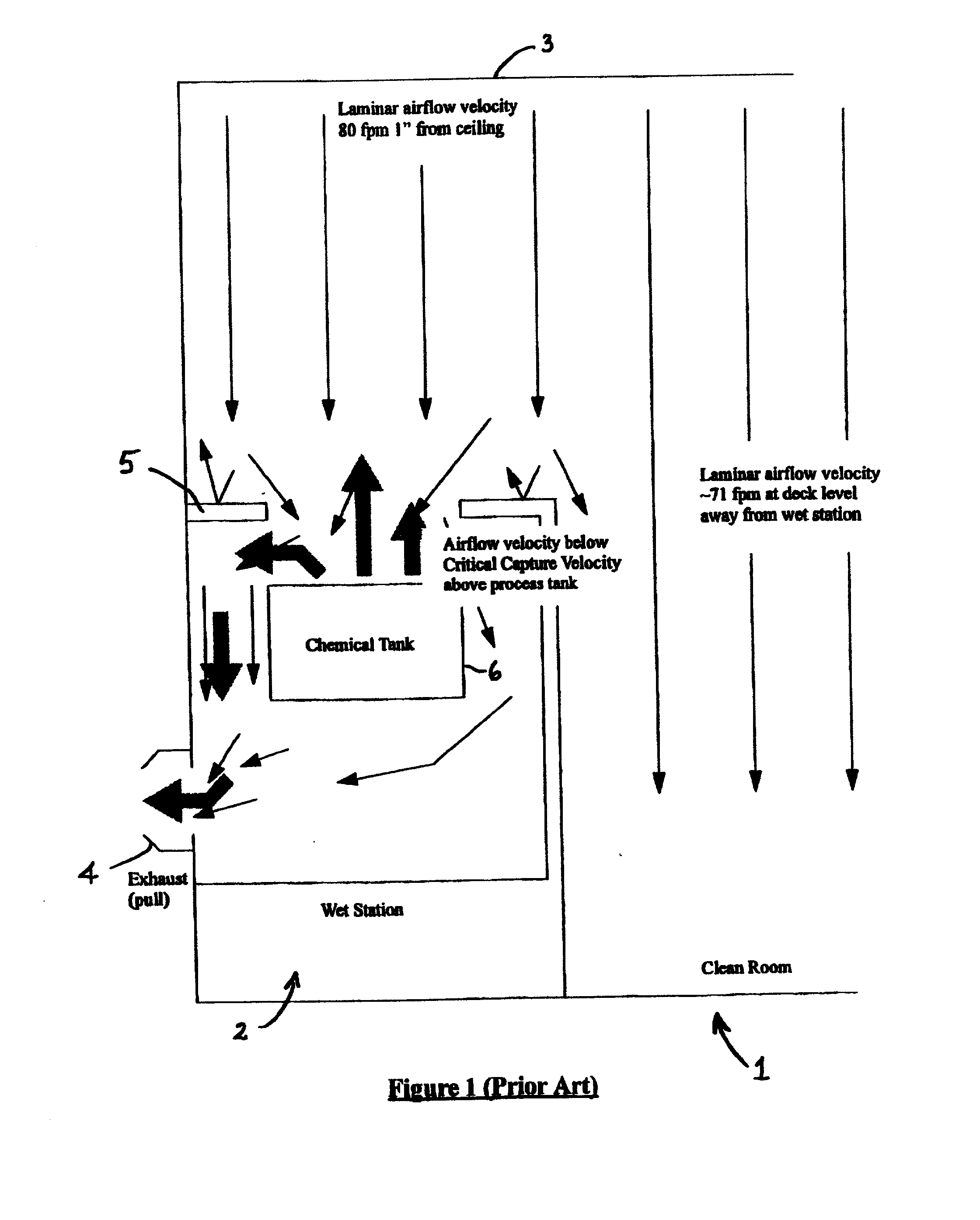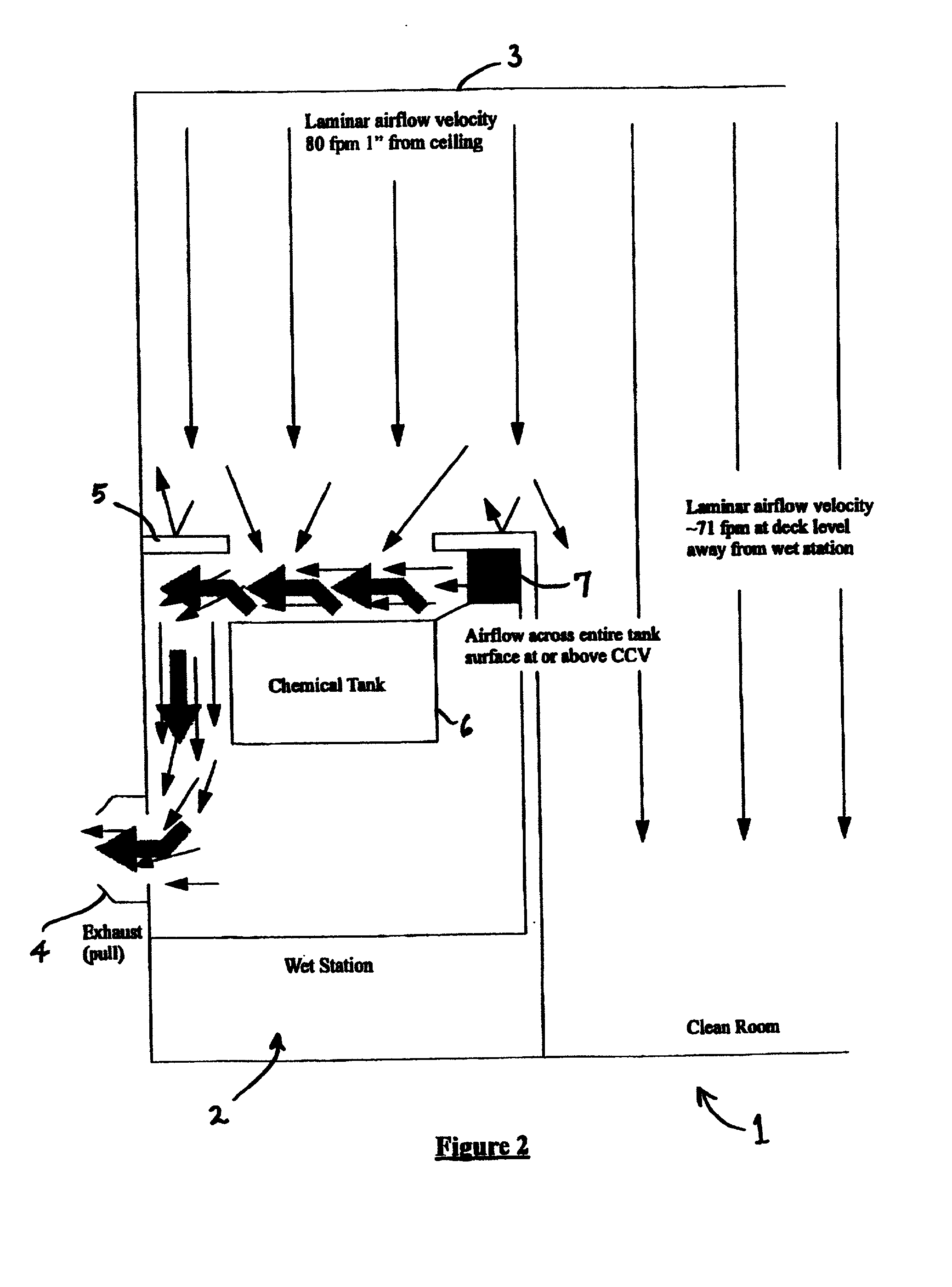Air management system and method for chemical containment and contamination reduction in a semiconductor manufacturing facility
a technology for chemical containment and contamination reduction, which is applied in ventilation systems, heating types, separation processes, etc., can solve the problems of air turbulence in the vicinity, increased difficulty in ccv, and occasional spillage of fumes into the process and operator environment, so as to prevent deleterious condensation of chemical fumes and reduce the escape of chemical fumes
- Summary
- Abstract
- Description
- Claims
- Application Information
AI Technical Summary
Benefits of technology
Problems solved by technology
Method used
Image
Examples
example 1
[0118] The air management system of the invention was evaluated in a semiconductor manufacturing facility wet system including a deck that was 128.5 inches in length, overlying a series of process tanks, comprising in sequence a chuck wash tank, a U CLEAN tank, two rinse tanks, two HF tanks, and two rinse tanks.
[0119] The U CLEAN tank and one of the HF tanks were studied by velocity profile and fog visualization tests. The deck openings for these tanks were each 11 inches by 15.5 inches. The U CLEAN tank was 16.5 inches wide by 26 inches long, and the HF tank had the same dimensions. Each tank was 11.75 inches tall, and the spacing distance between the upper end of the tank walls and the deck was 6.5 inches. The exhaust box for each tank had an exhaust duct opening 8 inches in diameter.
[0120] Measurements were taken at the deck opening above the process tank in each case. The deck opening above each process tank was divided into a 4.times.3 grid, and measurements were taken in the c...
PUM
| Property | Measurement | Unit |
|---|---|---|
| velocity | aaaaa | aaaaa |
| sizes | aaaaa | aaaaa |
| velocity | aaaaa | aaaaa |
Abstract
Description
Claims
Application Information
 Login to View More
Login to View More - R&D
- Intellectual Property
- Life Sciences
- Materials
- Tech Scout
- Unparalleled Data Quality
- Higher Quality Content
- 60% Fewer Hallucinations
Browse by: Latest US Patents, China's latest patents, Technical Efficacy Thesaurus, Application Domain, Technology Topic, Popular Technical Reports.
© 2025 PatSnap. All rights reserved.Legal|Privacy policy|Modern Slavery Act Transparency Statement|Sitemap|About US| Contact US: help@patsnap.com



